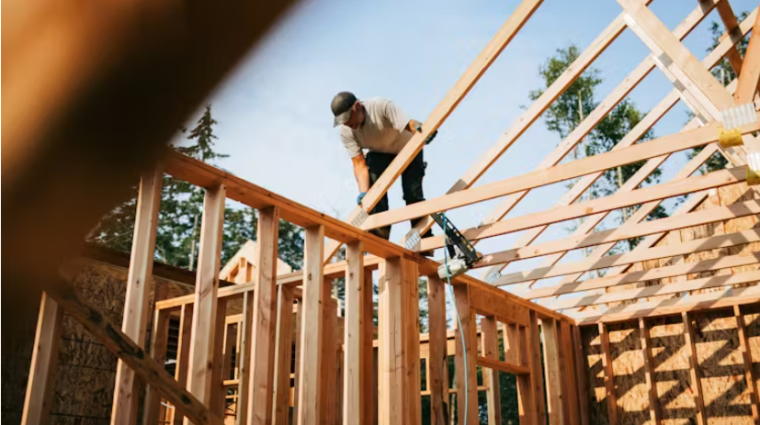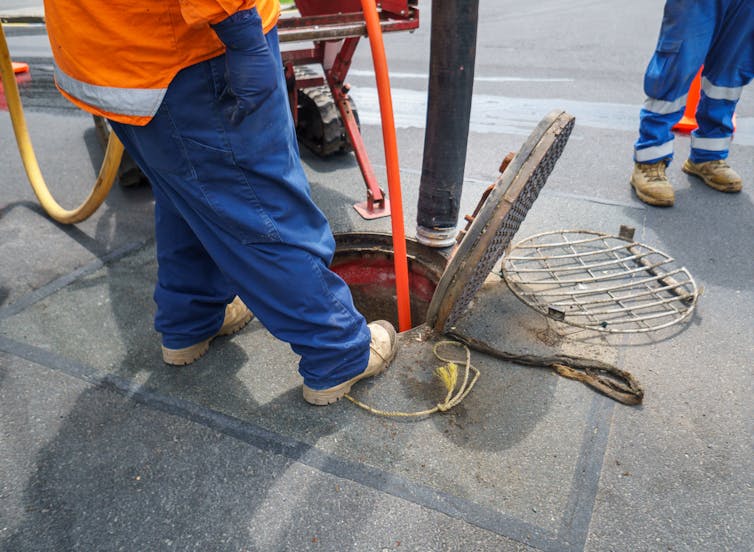
By Timothy Welch*
As part of its resource management reforms, the government will soon allow “super-sized granny flats” to be built without consent – potentially adding 13,000 dwellings over the next decade to provide “families with more housing options”.
This represents genuine progress in reducing regulatory barriers. But the scale of the housing crisis means we have to ask whether incremental reforms can deliver meaningful change.
The numbers provide important context. Against current consenting rates of 40,000 to 50,000 new dwellings per year, those projected 70-square-metre granny flats represent a 2.6% increase in housing supply.
In Auckland, where housing pressure is most acute, 300 additional units might be built annually. For some, that’s likely to be useful. But for a country already facing a housing crunch, it’s insignificant.
The costs of a granny flat
The numbers also reveal who can participate in this proposed solution. Building a basic 70-square-metre granny flat will cost between NZ$200,000 and $300,000. Add site works, utility connections and mandatory licensed building practitioner supervision, and total project costs will be closer to the upper end of that range.
At current interest rates, financing $250,000 requires approximately $480 weekly in loan payments. While rents of $500-$600 per week are achievable in urban markets, these thin margins assume optimal conditions.
For property owners with existing equity, this presents a viable investment. For those seeking affordable housing – young families, essential workers, recent immigrants – the benefits remain largely theoretical.
This dynamic illustrates a persistent challenge in market-based housing solutions: policies intended to improve affordability often primarily benefit those with capital to deploy.
Pressure on the pipes
Each granny flat requires full residential infrastructure – water, wastewater and stormwater connections. The development contributions – fees councils charge on new builds to fund infrastructure – will help fund network upgrades. But New Zealand already faces a $120-185 billion water infrastructure deficit over the next 30 years, just to fix existing systems.
The challenge is particularly acute in established suburbs where these units are most likely to appear. Parts of Christchurch serviced by vacuum sewers already operate at capacity. Auckland’s combined sewer areas face overflow risks during heavy rainfall. Wellington’s ageing pipes struggle with current demand.
Adding thousands of dispersed infill units to stressed networks poses genuine engineering challenges that funding alone cannot solve.
Transport infrastructure faces similar pressures. With minimum parking requirements axed across the nation, these new granny flats will likely increase on-street parking demand and local traffic.
While some granny flat residents may rely on public transport or active modes, New Zealand’s car ownership rates – 837 vehicles per 1,000 people – suggest most will own vehicles.

Approved but not always built
International experience offers instructive parallels. California’s 2017 Accessory Dwelling Unit legislation provides the closest comparison. After removing similar regulatory barriers, California saw permits increase from 1,000 in 2016 to 13,000 in 2019.
However, construction costs and infrastructure constraints limited actual completions to roughly 60% of approved units.
Australian cities report similar patterns. Despite permissive regulations in many areas, only 13-23% of suitable properties actually added secondary dwellings. High construction costs and infrastructure limitations proved more binding than regulatory constraints.
Closer to home, Auckland’s experience with minor dwellings under the Unitary Plan suggests cautious optimism. Since 2016, the city has averaged 300-400 secondary dwelling consents annually where permitted. The number of units actually constructed is unknown.
Allowing one-storey detached 70-square-metre units without building consent may increase this modestly. But they are unlikely to dramatically accelerate production given persistent cost and capacity constraints.
Another form of wealth transfer
The policy’s benefits flow primarily to existing property owners. They will gain new development rights without competitive tender or public process. While perhaps justified by broader housing benefits, it’s worth acknowledging this is a form of wealth transfer.
Granny flats typically add roughly their construction cost to property values, providing capital gains alongside rental income potential.
For renters, benefits depend on how many units actually materialise and at what price point. Secondary units often rent at 20-30% below comparable standalone houses due to their size and backyard location.
This could meaningfully expand options for singles and couples. But families requiring larger accommodation will see limited benefits.
The policy’s design constraints also tell us what kind of urban density is acceptable. Single-storey height limits, two-metre boundary setbacks and standalone requirements essentially mandate the least efficient form of intensification.
Units could share walls and services, and two-storey designs that use less land could be permitted. Instead, the granny flat exemption favours the one configuration that maintains suburban aesthetics while delivering minimal extra housing.
A modest response to the housing crisis
The granny flat exemption exemplifies New Zealand’s approach to housing challenges: acknowledging a crisis while implementing modest responses.
Despite severe shortfalls in housing supply, the medium-density development common in comparable countries remains largely unrealised. An estimated 180,000 households could be accommodated through comprehensive densification.
There are genuine benefits worth acknowledging, of course. The exemption reduces bureaucratic barriers, enables some additional housing and gives property owners new options.
The question isn’t so much whether the new policy should be embraced. But rather whether the government is willing to complement it with larger changes the housing crisis demands.![]()
*Timothy Welch, Senior Lecturer in Urban Planning, University of Auckland, Waipapa Taumata Rau.
This article is republished from The Conversation under a Creative Commons license. Read the original article.
12 Comments
This is aimed squarely at landlords - offering the ability to significantly increase rental yields on existing properties without the full cost of buying or building a new property.
Over crowding and strained infrastructure are the likely outcomes.
Agree completely.
The other thing someone should research is AirBNB/Bookabach compliance/non-compliance with the Healthy Homes regulation. I suspect that many BNBs do not meet those regulations - despite being quite livable. The owners might prefer to rent them under a periodic tenancy but are hampered by not meeting the HH regulations.
Those regulations are quite extensive;
https://www.govt.nz/browse/housing-and-property/insulation-and-energy-e…
Interestingly, we recently sold a home - fully renovated by a builder-owner to current CoC - only to find that the HH regulations required a moisture barrier under the house, whereas the Building Code did not. It was fully insulated underfloor (in ceiling and all internal and external walls) - and dry as a bone under the house. Quite silly, really that these two pieces of legislation are unaligned.
Tell David Seymour.
There is no housing crisis.
There is a population crisis.
So this is a tertiary academic wrongly framing the problem.
Agree 100%.
International experience offers instructive parallels. California’s 2017 Accessory Dwelling Unit legislation provides the closest comparison. After removing similar regulatory barriers, California saw permits increase from 1,000 in 2016 to 13,000 in 2019.
California is a disaster. You only have to look at the provision of housing for homeless in LA - basically shacks made out of plywood for a single person but costing well over 6 figures per unit. People are better off being homeless than living in the hellscape that the bureaucrats offer to justify their existence.
The price of Musk's Tesla homes top out near USD20K.
The author has mostly presented a one-sided negative review. Although not a panacea for housing, this change is a step in the right direction, and will help to maximise use of current housing land, rather than greenfields development that arguably creates more headaches regarding infrastructure costs and the like.
Does it help ratepayers who will see even further hikes to redo the stormwater, sewerage piping etc required to allow for so many new dwellings in already established suburbs that are already at capacity? Ratepayers will scream and yell, while the select few will profit and benefit. Maintenance costs will increase due to increased sewerage blockage callouts and need for bigger pumping systems, the list goes on. The issue is too many people. Curb the immigration (looking objectively here, no race, culture, gender etc implied) to skilled migrants only, and refit the current pension scheme so we don't need ever growing people to come in to pay the pension for many whom it is simply excess.
You say that the GF add to the value to the property equal to their cost, thus it is net sum neutral with regard to capital gains , ie there is no capital gain in excess of its cost.
Also if a property has the opportunity to be developed at a higher density then it is more likely to be developed as that rather than have GF.
Also in subdivisions with covenants that exclude further subdivision, GF maybe possible as per the allowance a minor residential dwelling as is permitted.
Yes of course it is only a small step but is a foot in the door to unlocking the wider restrictive policies that prevent more affordable housing.
And this is not a wealth transfer because wealth has not been transfered, only the ability to add a cost and maybe a value added profit. The exact future nature of this is yet to be decided by the market in that if other housing reforms opened up, then they may make the GF properties less attractive to the alternative.
Plus it results in a lower rent for any tenant that only needs this type of accommodation.
It's a great first step, of many others to come, hopefully.
Of course granny flats won't solve it all. But will help a bit.
There are few problems with a single solution that solves it all.
I'm getting the impression that some commentators are saying that because the sewerage and water pipes and treatment stations will become overloaded granny flats should be stopped. Does the proposed new GF legislation stop councils from charging a development levy? I doubt. Old existing sewerage and water infrastructure is very likely to require upgrades now because of either past mismangement or spending the levy money elsewhere. Time for a comprehensive audit of where the levy funds have disappeared on projects not related for the purposes for which they were intended. The other situation of which I'm not aware of is allowing developers a freebie and putting the costs on existing ratepayers. This may have been a past practice and by past I mean 15+years.
It's actually the opposite.
Much of the infrastructure in older subdivisions of the like that can be redeveloped or have GF is at its end of life and council need to increase rates substantially on the existing owners to pay for needed upgrades regardless of any other dwellings being added.
These new development charges are paying money for upgrades that will benefit everyone when they are needed.
But existing homeowners need to pay more, or at least demand of council what happened to the monies paid to date that were meant to be put aside to cover future upgrades.
We welcome your comments below. If you are not already registered, please register to comment.
Remember we welcome robust, respectful and insightful debate. We don't welcome abusive or defamatory comments and will de-register those repeatedly making such comments. Our current comment policy is here.